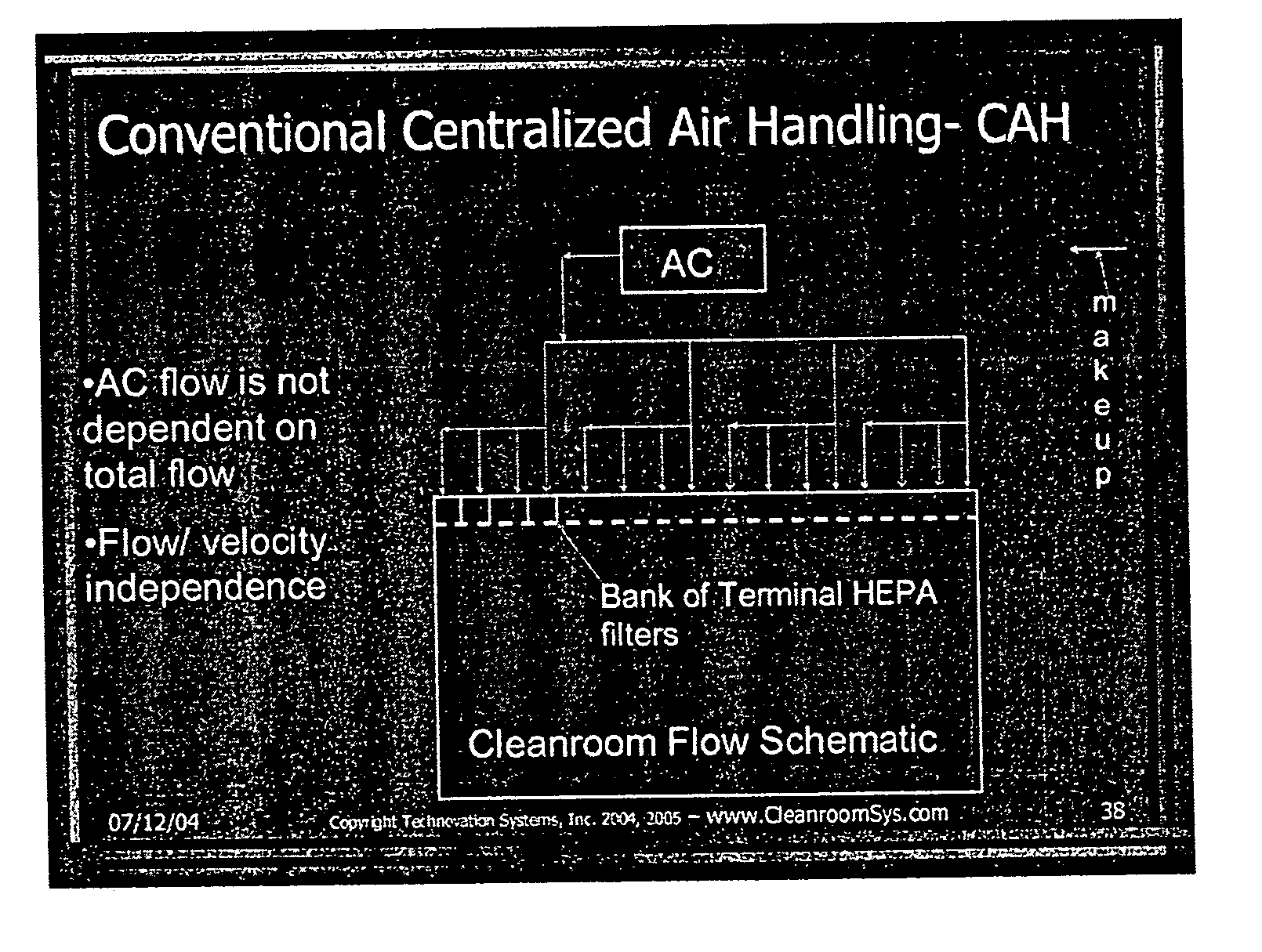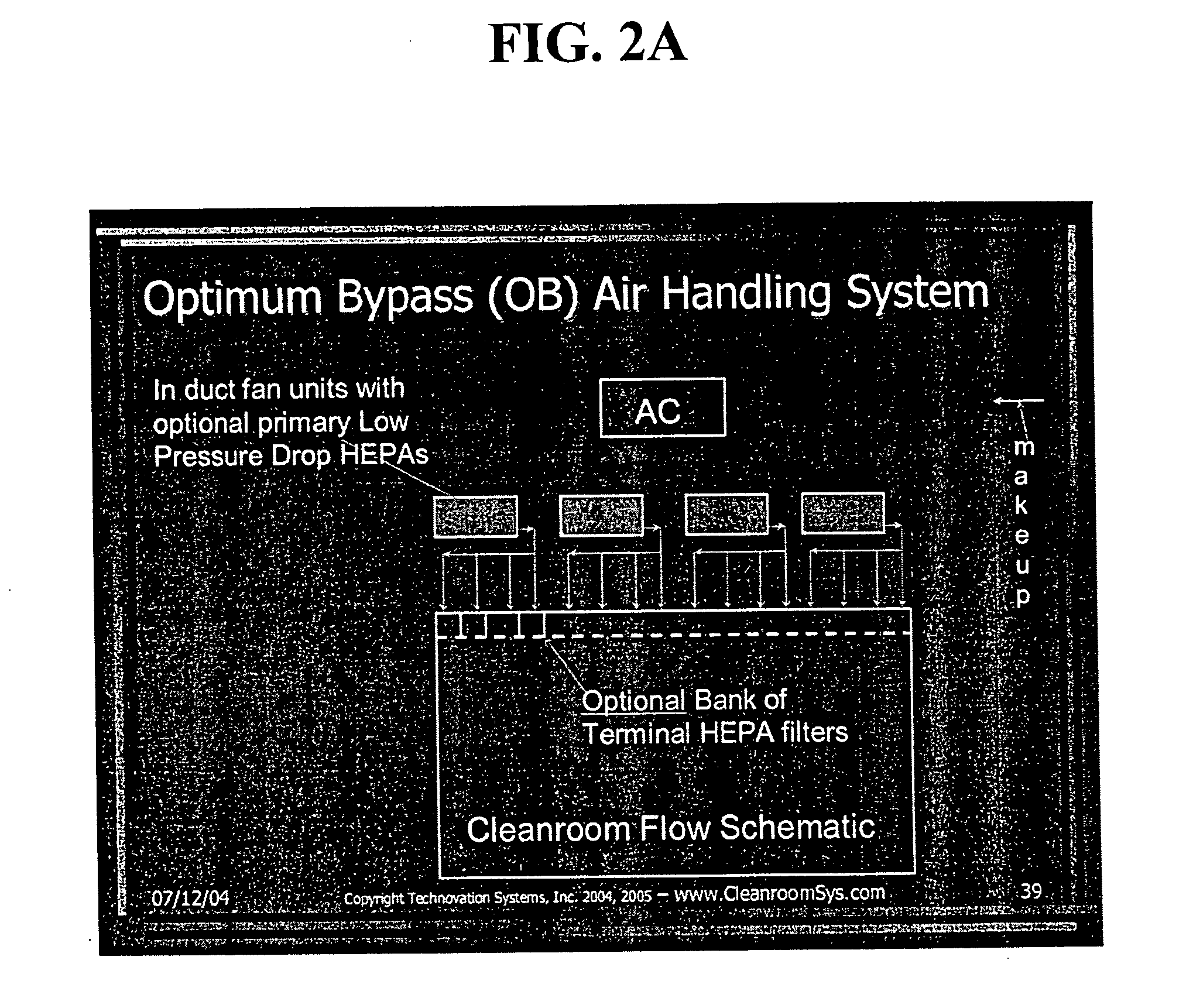Energy efficient air handling system for cleanrooms
a technology for air handling systems and cleanrooms, applied in lighting and heating apparatus, heating types, instruments, etc., can solve the problems of inefficiency and unnecessarily high energy consumption, no process has been able to optimize energy savings, and the air leaving the cooling coil would be too cold for the cleanroom environment. , to achieve the effect of reducing installation and operating costs
- Summary
- Abstract
- Description
- Claims
- Application Information
AI Technical Summary
Benefits of technology
Problems solved by technology
Method used
Image
Examples
Embodiment Construction
[0034] Turning now to the drawings, FIG. 1 illustrates an airflow schematic in a system that relies upon dehumidification by means of cooling; the most common air handling system used in cleanrooms is the central air handling (CAH) system—in this case the entire return airflow is circulated through a central air handler. In this system the return air, known as the re-circulated air, is mixed with the make up air which is drawn either from the outer environment or from a first stage make up air conditioning unit. The combined return air and make up air is then conditioned for both moisture content (relative humidity (i.e., also known as “RH”)) and temperature. In central air handling systems, the supply air must be at a temperature suitable to meet the sensible heat load of the clean room (i.e., the clean room is an environmentally controlled space). The air is cooled to a dew point corresponding to the required moisture content level, and the excess moisture condensed on the cooling...
PUM
 Login to View More
Login to View More Abstract
Description
Claims
Application Information
 Login to View More
Login to View More - R&D
- Intellectual Property
- Life Sciences
- Materials
- Tech Scout
- Unparalleled Data Quality
- Higher Quality Content
- 60% Fewer Hallucinations
Browse by: Latest US Patents, China's latest patents, Technical Efficacy Thesaurus, Application Domain, Technology Topic, Popular Technical Reports.
© 2025 PatSnap. All rights reserved.Legal|Privacy policy|Modern Slavery Act Transparency Statement|Sitemap|About US| Contact US: help@patsnap.com



